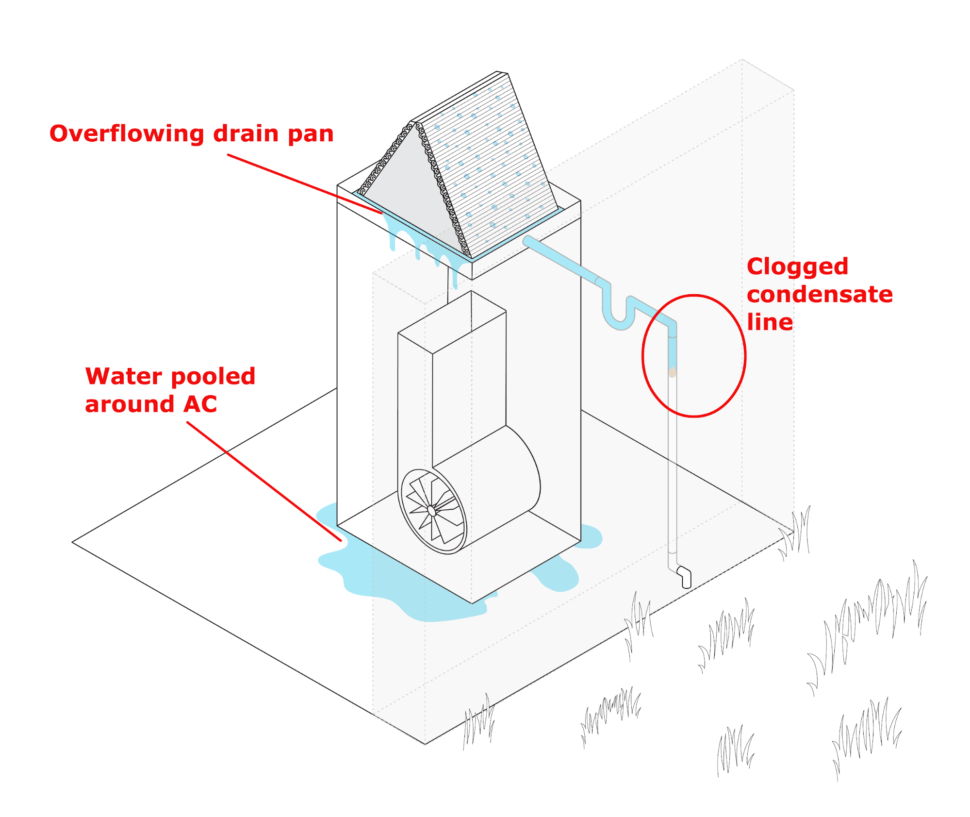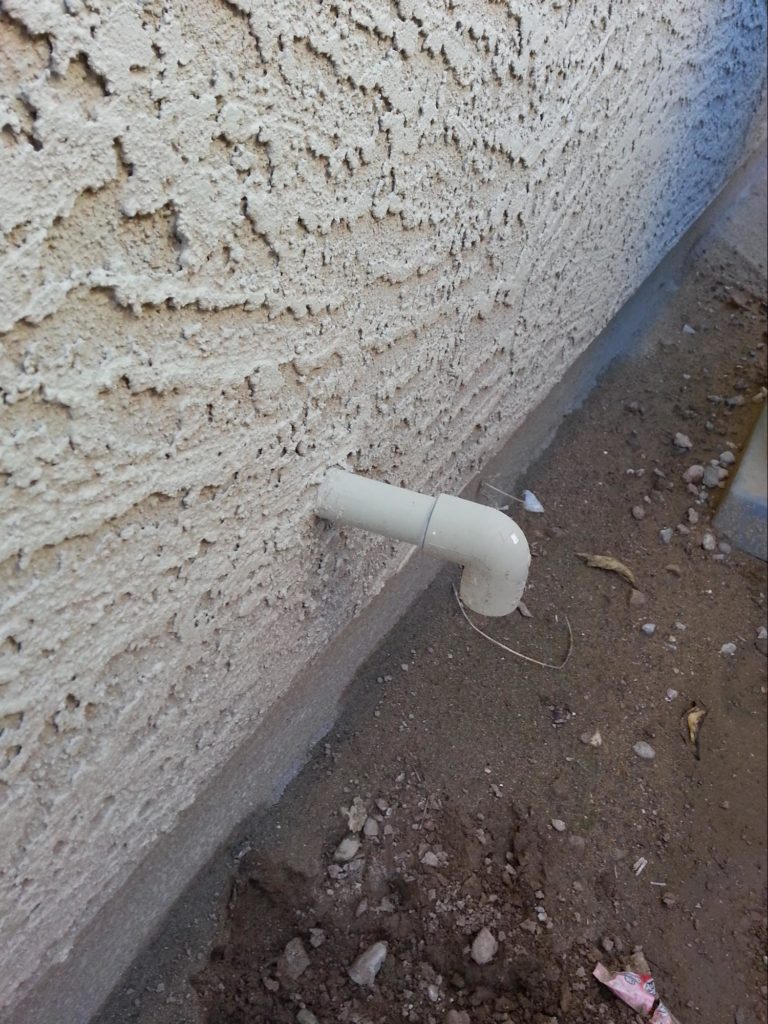Why Is My Air Conditioner Leaking Water?
Filed under: blog
Is there a puddle of water around your air conditioner? The worst thing you can do is avoid it. A leaking AC can lead to significant damage and costly repairs if it’s not handled right away.
Several issues that can cause your AC to leak include:
- A frozen evaporator coil
- A clogged condensate drain line
- A cracked drain pan
In this blog, we’ll take a closer look at each of these issues to help you determine exactly what’s causing your AC to leak and what you can do to fix it.
Need a professional to fix your leaking AC ASAP? No problem!
Want a professional to fix your AC right away? Our trained technicians are standing by, ready to help!
Issue #1: A frozen evaporator coil
Some of these problems you can try to fix yourself; others require professional expertise. In the last section of the blog, we’ll share some DIY solutions for the problems you can fix.
If your evaporator coil is frozen, ice will begin to collect on the coils. The ice will eventually melt between cooling cycles, causing water to leak in your home.
Your evaporator coil is inside your indoor AC unit. The evaporator coil itself is made up of smaller coils (made of copper), which are filled with a substance called refrigerant (a heat transfer fluid).
Using the refrigerant, your evaporator coil cools your home’s inside air. As the warm air from inside your home blows over the cold coils, the refrigerant absorbs the heat from the air. Your AC system now has cool air blowing back into your home.
If there’s not enough warm air blowing over your evaporator coil, the evaporator coil will begin to freeze. When your AC is off, the ice on the coils has time to melt, which leads to water leaking inside your home.
Once your AC starts running again, the coil will freeze all over again.
Typically, a frozen evaporator coil can be caused by one (or several) of the issues below:
- Closed or blocked return vents – If your return vents are closed or blocked, your AC will have trouble delivering enough warm air to your evaporator coil, causing the coil to eventually freeze over.
- A dirty air filter – A clogged filter blocks airflow to the evaporator coil. This blockage causes the coil to freeze due to a lack of warm air blowing over it.
- A refrigerant leak – As we mentioned, your evaporator coil uses refrigerant to absorb heat from the air inside your home. If the refrigerant levels are low (due to a leak somewhere in the lines), the coils will become too cold and begin to freeze.
The fix: If you think a frozen evaporator coil is causing the issue, check your air filter and replace it if it’s dirty. Also, make sure that all your air vents are open and there’s no obstructions.
If the issue continues after trying the suggestions above, it means you probably have a refrigerant leak, in which case you’ll need a professional to handle for you.
Issue #2: A clogged condensate drain line
A condensate line that’s clogged can cause your drain pan to overflow and eventually leak inside your home.
During normal operation, your AC takes in warm, humid air and removes the heat and moisture from that air. The primary drain pan (a pan made of galvanized metal or plastic that sits inside your AC unit) collects that moisture.
The moisture is then transferred out of your home via the condensate line (a white PVC pipe), which finally dumps the moisture outside.
Like we mentioned above, your AC uses refrigerant to help cool your home’s air.

If the condensate line becomes clogged, the moisture that your AC has taken in from the air will back up in the drain pan. The clog can eventually cause the drain pan to overflow and leak at your indoor AC unit.

The fix: Clearing the clog yourself depends on exactly where it is in the pipe. For example, if the clog is near the end of the line, clearing it can be a fairly simple.

You can clear the clog in your condensate line by following these steps:
- Get a wet/dry vacuum.
- Find the condensate drain line (pictured above) outside your home.
- Connect the vacuum to the end of the condensate drain line and turn it on.
The vacuum should suck out any debris or obstructions that may be clogging the line.
However, if the vacuum is unable to suck out any debris, it means the clog is probably higher up in the condensate line. If this is the case, you’ll need to call a professional to unclog the line for you.
Issue #3: A cracked drain pan
If your AC drain pan is cracked or rusted (depending on the material), the water that it collects from the evaporator coil will leak inside your home.
As we mentioned earlier, the AC drain pan sits underneath your evaporator coil. During normal operation, the drain pan collects all the condensation that drips off the evaporator coils.
Eventually, that water drains into the condensate drain line and is safely dumped outside via the condensate drain pipe.
Over time, due to age, deterioration, or rust (if the pan is metal), your drain pan can crack. A cracked drain pan causes the collected water to leak and form a puddle around your AC unit.
The fix: We recommend leaving this issue to the professionals. A pro technician can replace your old drain pan with ease and make sure that you have the right pan for your specific unit.
Looking for an AC repair in Edmond? Look no further.
Here at Prudhom, we pride ourselves on working according to your immediate needs. Our technicians give you transparent, upfront pricing on all AC repairs/services, and we’re so confident in our process, that we offer a 100% satisfaction guarantee.
Learn more about what we do and what to expect when you hire us by visiting our AC repair page.